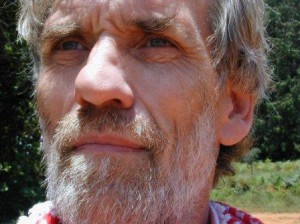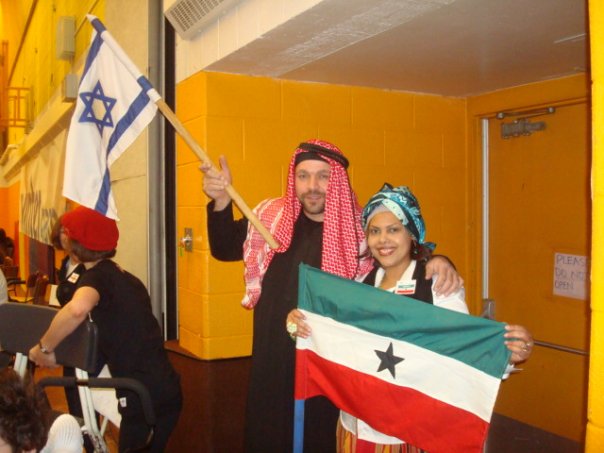GubanOgoHawdJSL wrote: Mon Aug 06, 2018 1:57 am
Kismaayo21 wrote: Mon Aug 06, 2018 12:23 am
GubanOgoHawdJSL wrote: Sun Aug 05, 2018 10:54 pm
I doubt rape victims from gedo can talk.
It’s unfortunate that a innocent woman got RAPED which means against her will btw by the Kenyan armed Forces in Gedo. How can you compare that to a married woman in Hargeisa VOLUNTARILY which means she freely busted it open to a unarmed old fragile 72 year old white man and get videotaped too




When it comes to women Isaaq shouldn’t talk but look at the floor. Which sane Muslim somali woman would come near that old man and get videotaped too wtfff
Doofar raped and tortured by their fellow doofar bunch of lowlives giving birth to more jahiiliin.
In the heart of the eastern city of Jijiga, just five minutes from the University, lies one of the most notorious detention centers in Ethiopia. Jail Ogaden, officially known as Jijiga Central Prison, is home to thousands of prisoners, who are brutalized and neglected. Many have never been charged or convicted of any crime.
Former prisoners described a horrific reality of constant abuse and torture, with no access to adequate medical care, family, lawyers, or even, at times, food. Officials stripped naked and beat prisoners and forced them to perform humiliating acts in front of the entire prison population, as punishment and to instill shame and fear. In overcrowded cells, head prisoners, called kabbas, beat and harassed prisoners at night during interrogations, passing notes on to prison leaders who then chose some for further punishment. The purpose of the torture and humiliation was to coerce prisoners to “confess” to membership in the Ogaden National Liberation Front (ONLF), a banned opposition group.
This report, based on almost 100 interviews, including 70 former prisoners of Jail Ogaden, documents torture and other serious abuses, including rape, long term arbitrary detention, and horrific detention conditions in Jail Ogaden in Ethiopia’s Somali Regional State (Somali Region) between 2011 and early 2018. Interviewees also included government officials and members of Somali Region security forces.
Many of the former prisoners interviewed said they saw people dying in their cells after being tortured by officials. Female former prisoners told of rape. Prison guards and the notorious Liyu police [“special” police in Amharic], brutalized prisoners, at the behest of regional authorities. The prison is subject to almost no meaningful scrutiny or oversight.
The cycle of torture, humiliating treatment, overcrowding, inadequate food, sleep deprivation, and lack of health care in Jail Ogaden is consistent with the government’s long-standing collective punishment of people who are perceived to support the ONLF. Human Rights Watch has previously documented how the Ethiopian army committed crimes against humanity and war crimes during counter insurgency operations against the ONLF in 2007 and 2008, including extrajudicial executions, torture and rape.
Rather than meaningfully investigate the crimes at that time, the Ethiopian government established the Liyu police who have committed a range of serious abuses in Somali Region since 2008. The Liyu police report to the Somali Region president, Abdi Mohamoud Omar, known as Abdi Illey.
In Jail Ogaden, disease is rampant, basic water and sanitation needs are systematically ignored, while prisoners report deaths in detention following the outbreak of infectious disease. Some former prisoners told Human Rights Watch that corpses sometimes remained in prisoners’ cells for several days.
Female prisoners gave birth in their cells without access to skilled birth attendants, often in grossly unhygienic conditions. The plight of children, some allegedly born in Jail Ogaden from rape by prison guards, is especially tragic. Former prisoners said that lactating mothers received no extra food, and that children received no education. Since 2013, prisoners have reportedly not been permitted any visitors, or to receive food or other goods from relatives.
Release of prisoners is often ad hoc and the length of prisoners’ sentences, when they have one, may have little bearing on when they are actually released.
Former prisoners said that senior Somali politicians including Abdi Illey and Somali Region head of security and head of the Liyu police Abdirahman Labagole appeared regularly at the prison to speak to the prison population. Many of the worst abusers have been the prison heads of Jail Ogaden. Not only do some of these officials appear to have ordered torture, rape and denial of food, but in some cases, former prisoners alleged that they were personally involved in committing rape and acts of torture.
In 2011, Somali Region officials carried out an 11-day evaluation of prison guard performance which corroborated many of patterns of abuse former prisoners described to Human Rights Watch. The evaluation was filmed at the request of Abdi Illey, and then shared with Human Rights Watch several years later when an advisor to Abdi Illey left Ethiopia. On film, guards detail torturing, raping, and extorting money from prisoners, and describe how various senior officials at Jail Ogaden directed them to engage in torture and rape.
Since you like reading rape stories ....
https://www.google.com/amp/s/www.indepe ... tml%3famp
In Somaliland, women are being raped as a result of extreme drought and lack of support
“Two days ago four men came, grabbed me and started raping me. Most women and girls in the camp have been assaulted or raped by gangs,” begins Hodan Ahmedan, 23, sitting in her makeshift shelter where she has lived since she arrived from drought-ridden eastern Somaliland to a camp for internally displaced in Maxamed Mooge, Hargeisa.
Cases of sexual and gender-based violence (SGBV) are rife here. A lack of police presence, inadequate lighting, an absence of sanitary facilities and an increase in the number of female-only households has rendered this camp an ideal ground for SGBV. “The ground is really hard here so we can’t dig to make lavatories.
This means we have to go outside and because there is no privacy in the open, we only go once it gets dark,” explains Hodan “and by the time it is dark enough for us to go, it also becomes very dangerous as many gangs operate here. These are the circumstances in which I was raped.”
“It happens to all of us, all the time,” concludes Sahra Hussein, one of the oldest residents in the camp.
Somaliland, an arid and internationally unrecognised state in the Horn of Africa, is suffering from one of the worst droughts in years, aggravated by one of the strongest El Niño events on record, which has led to the displacement of tens of thousands of Somali rural pastoralists communities.
Triggered by weak winds and warm water in the Pacific Ocean, the El Niño climate cycle, is according to a new study published by the American Meteorological Society, being worsened by climate change.
The study claims that “anthropogenic warming contributed substantially to the very warm 2015/2016 El Niño” and as a consequence is intensifying the cyclical droughts in Somaliland to unprecedented levels.
Hargeisa, the capital, has been the main the destination for most climate-forced refugees and according to the United Nations High Commissioner for Refugees (UNHCR), is now home to 85,000 internally displaced persons (IDPs). But life here is a far cry from the relief most had hoped for, the situation proving even worse for women refugees.
When women arrive in the capital they find themselves cast to the margins, in hostile environments with few employment opportunities. While men have found it possible to find jobs in the city, the multitude of dangers the drought has exposed women to – from sexual assaults, to illegal land grabbing, to lack of sanitary facilities – clearly demonstrates that it is the women who are bearing the brunt of the drought and its consequences.
“I arrived here two months ago. The drought killed my animals. But the lack of water has affected us in many other ways. Just before coming here, I went into labour but I had no water and so I lost my baby. I became very weak and could not stop bleeding,” explains Amina Abdul Hussein, mother of three, inside her makeshift shelter away from the sun’s glare, in a camp for internally displaced in Maxameda.
Many women in the camp report they have suffered from miscarriages because of the drought and a recent study in Global Environmental Change found that reduced rainfall and high heat has resulted in low birth rates, stemming from the increased likelihood of miscarriages.
“In the very early stages of intra-uterine development, climate change has the potential to significantly impact birth outcomes,” said Kathryn Grace, professor of geography at the University of Utah and lead author of the study.
“As soon as my husband saw me in this state [having miscarried a child], he left. I came to Hargeisa and ended up here,” continues Amina. In order to survive, she, like the other women in the camp, picks up stones and sell them at market. They claim to make about 60,000 SOS (approximately £5.60) per ton but as Amina emphasises, “it is difficult work. I suffered many complications following my miscarriage and carrying heavy loads puts me in a lot of pain”.
The money is used to pay rent and buy food. The women explain that the land they stay on is privately owned and recount frequent visits by violent landlords. “If we don’t pay, they set our shelters on fire,” explains Amina, “so many have here have been burnt”. This camp, like most of the country, receives no humanitarian support from the international community or the government. Nima Berashe, 45, explains that although various agencies have come to ask questions and assess the situation, “they have never come back”.
But women are not the only ones bearing the brunt of the drought. The elderly and their grandchildren, too weak to flee, have also been left to die in the rural areas of Somaliland. Lol
“He is the last of our animals,” sighs Dacar Yusuf Galaydh, 75, as he stands over his donkey, which is lying close to starvation head sunk to the ground.
When one of his animals passes away, Dacar carries their limp bodies from his home out to a field. The harshest drought to have the racked the Horn of Africa in two decades has killed off all of his cattle, sheep and goats. “Even our donkeys have died, this is the last one,” he claims.







